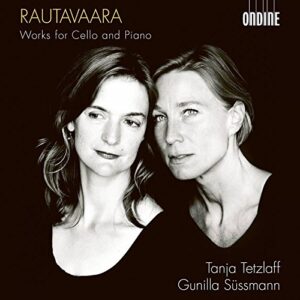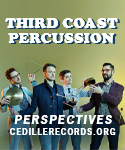Einojuhani Rautavaara is a most wonderful composer of the 20th (and 21st) century; a giant of beauty who left a catalogue of great music when he died in the summer of 2016. I first noticed him when the then barely 20-year-old Finnish conductor/violinist Mikko Franck called him “the greatest composer–ever”. Youthfully pretentious, of course, but it did the trick. More meaningfully, though, it was Sibelius who had set expectations high, when he once called Rautavaara, more reasonably, the “most promising Finnish composer”. Not that Rautavaara ever sounded particularly Sibelian, which many would-be fans might have expected after these laurels. If anything, there’s more Harald Sæverud to be found, or Bruckner, or even Roy Harris. Or simply: Rautavaara.
Although, even that is slightly misleading, because it’s not as if Rautavaara had one coherent style. There’s his early neo-romantic/neo-classical phase; there’s a subsequent twelve-tone phase; and then the one he is probably most famous for, which might be called “fauvist”. This disc covers the earliest and last phase, starting with the neo-classical Two Preludes and Fugues (1955) that pay homage first to Einar Englund then to Béla Bartók. Cello Sonata No. 1 (from 1972; it first morphed into Canto III and was only finished in its originally intended form in 2001) manages to seduce in ways that remind of Debussy without necessarily sounding like him.
Cello Sonata No. 2 (1991, but also based on material from the ’70s) is a transition work that carries some of the complex luggage of the composer’s errant dodecaphonic ways, but is also never willing to shake a commitment to beauty. Song of My Heart and the Polska are short, entertaining bits–a heartrending dirge the first, a feisty-folksy polka the other. The substantial Sonata for Solo Cello has Bach looking over Rautavaara’s shoulder throughout, and is easy enough to listen to, but does not exactly imprint itself on the ear. Too often it sounds joyless and, despite Tanja Tetzlaff’s deft handiwork, like hard work.
None of these works has the beguiling arch that (some of) Rautavaara’s symphonies have, nor–Cello Sonata No. 1 excepted–the seductiveness of his concertos, and certainly not the wildly enchanting beauty of his string quartets and the string quintet. All those are better fare for Rautavaara newcomers. Listeners who already have been entranced by the Finnish master, however, will gladly continue their musical journey with these passionate and spot-on performances.
































